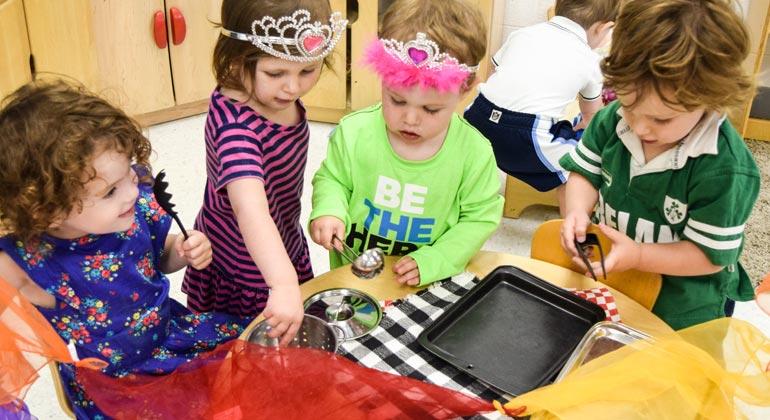6 Sensory Activities to Try at Home

As human beings, we’re hard-wired from birth to explore the world through our senses. The way we receive and respond to sensory stimuli has a powerful impact on our experiences. Creating opportunities for children to explore sets them up for long-term success with essential skills including problem solving, decision making, curiosity and perseverance.
Long before they become proficient with language, young children discover through their senses. It’s no coincidence that babies first put everything in their mouths, since the sucking reflex provides a powerful channel for taking in information. As they gain motor control, older infants and toddlers are notorious for touching everything in sight. Given this propensity toward physical engagement, young children learn best when given freedom to explore with all of their senses.
Sensory play includes activities that stimulate sight, sound, smell, taste and touch, among others. These multimodal experiences enhance development, promote cognitive growth, gross and fine motor capacities, language, social skills and more. Through hands-on experimentation and adult supervision, children understand how objects work and make real-life connections between words and their meanings. For example, imagine explaining what “bumpy” feels like, without allowing the child to touch a textured object. The direct connection between an abstract symbol and a related tangible experience brings concepts to life.






